Have you found yourself in a situation with too many plastic insert fitting options and have no idea which one to pick? Well we've got you covered. In this article we will go over the strengths and weaknesses of nylon, poly and PVC insert fittings. We will also discuss the best material for irrigation systems and provide you with a chemical resistance information and pressure and temperature rating guides. This will help you to determine which plastic insert fitting is right for you and your application. So let’s dive in.
Plastic insert fittings
Nylon
Strengths: 
Nylon is by far the toughest of the three materials. It is great for use in water well and underground applications. It is durable for backfilling as well as other applications such as barns, livestock and watering systems. This fitting can take the greatest abuse, for example stretching or twisting and still perform well.
Weaknesses:
Nylon is not suitable for direct exposure to sunlight. Ultraviolet rays will cause the fitting to become brittle. Not as many chemicals are suitable for use with Nylon fittings as opposed to Poly and PVC fittings.
Poly
Strengths: 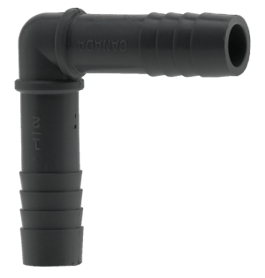
Poly fittings are the most economical of the three. They offer good chemical resistance and are used widely in the pool and spa industry. Poly fittings can be used with some chemicals that are not suitable for PVC.
Weaknesses:
Poly is the least durable of the three materials. There are also less items available in the reducing fittings.
PVC
Strengths: 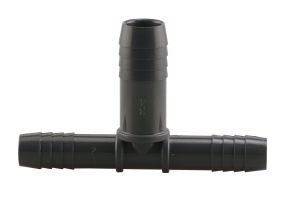
PVC has the widest range of fittings on the market. It is the best choice for irrigation applications since it is not affected by ultraviolet rays. PVC fittings can be used in a variety of residential, industrial, and commercial applications. PVC fittings overall have a good chemical resistance. They can be used with some fluids that are not suitable for poly fittings, such as lubrication oils.
Weaknesses:
Overall, PVC fittings don’t have any noteworthy weaknesses, however, they are more expensive than Poly fittings.
Why is PVC used for Irrigation Installations?
Aside from the fact that PVC insert fittings are not affected by ultraviolet rays, they have a strong chemical resistance and are tougher than poly fittings. Making them the best candidate for irrigation applications.
When winterizing your irrigation system, you are going to want to use PVC insert fittings, and let me tell you why. If your water lines are not below the frost level, you are going to experience freezing once the cold temperatures hit. To winterize these water lines, you must blow out the water to prevent damage. However, since it is not always possible to remove 100% of the water (due to rise and fall of the pipe) water can be left in low lying fittings and could freeze.
PVC fittings are very rigid, making them the best suited to ensure that the expansion of the ice will be forced lengthwise out of the fittings and into the pipe as opposed to expanding the diameter of the fitting. This ensures that the pipe and gear clamps will maintain a positive seal.
Nylon fittings although being the toughest of the three materials, are not suited for this particular application. This is due to the fact that nylon will stretch in diameter under this circumstance. This stretching can result in loosened clamps. Since nylon has a memory, it will return to its original size when it unthaws creating a loosened connection and possibly causing a leak.
Chemical Resistance Information Guide
The chart below provides a guide on the suitability of nylon, poly, and PVC insert fittings with a wide range of chemicals.
Regardless of where you find chemical compatibility information, it is to be used as a guide only! It is the sole responsibility of the system designer or end user to determine the suitability of the product for the specific application. In many cases the best resource is the manufacturer of the chemical. They are in a position to provide the most qualified advice on materials that are suitable to be used to transfer the fluid or chemical solution they produce. They have extensive practical experience regarding the types of valves, fittings, storage tanks, and packaging containers they use to transfer, store, and package the chemical in their facilities.
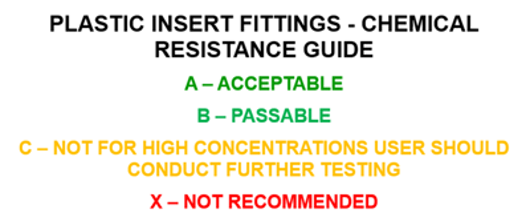
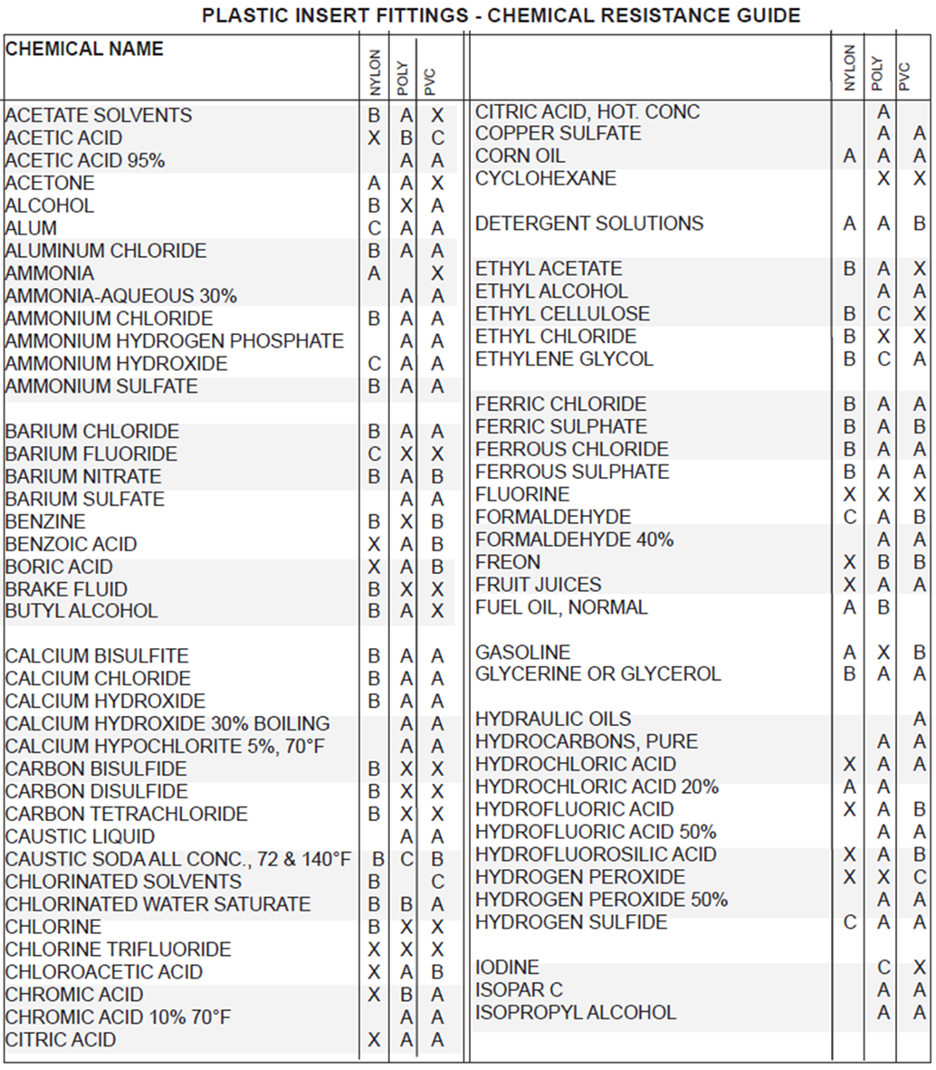

Pressure & Temperature Rating Guide
The chart is to be used as a guideline for the allowable Pressure & Temperature Ratings for Nylon, Polypropylene & PVC Insert Fittings.
Generally speaking, the limiting factor in a system using these insert fittings is the poly pipe. You must ensure that you verify the poly pipe maximum pressure and temperature ratings with the PE pipe manufacturer.
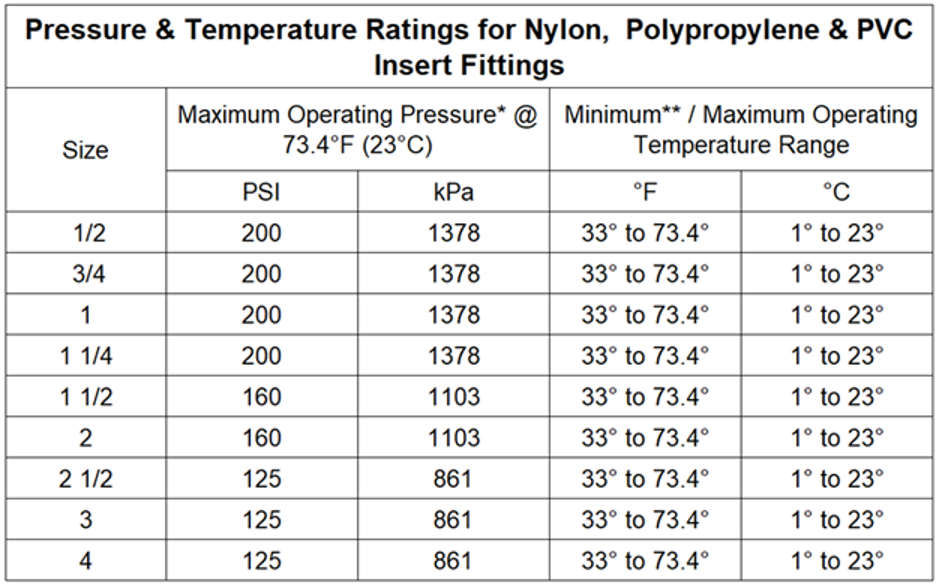
Plastic insert fittings are intended for cold water applications, including irrigation, well service, and potable water applications. For operating pressures over the stated Max. PSI and / or temperatures over 73.4°F (23°C) the use of metal insert fittings is highly recommended. Note that plastic insert fittings cannot be used in any kind of gas application.
Conclusion
In conclusion, each plastic insert fitting that Boshart offers has strengths and weaknesses. It is important to select one that will hold up for your application. If you live in a colder climate, be sure to use PVC insert fittings in your irrigation system so that you don't have a nasty surprise waiting for you when spring hits.
Have further questions about this subject?

Head over to Boshart's Knowledge Base: technical product information, guidelines, and more.


.png)
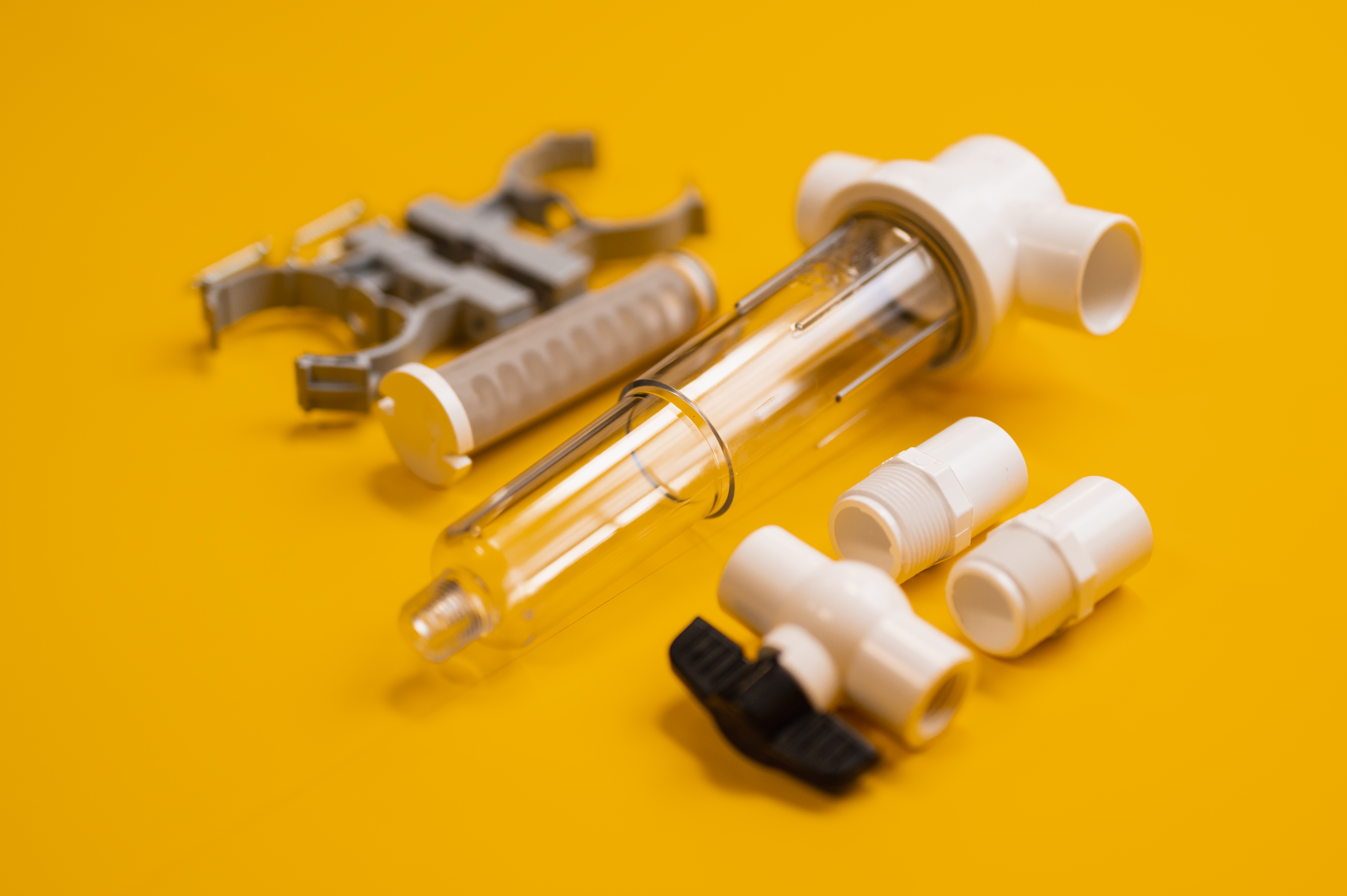

SHARE